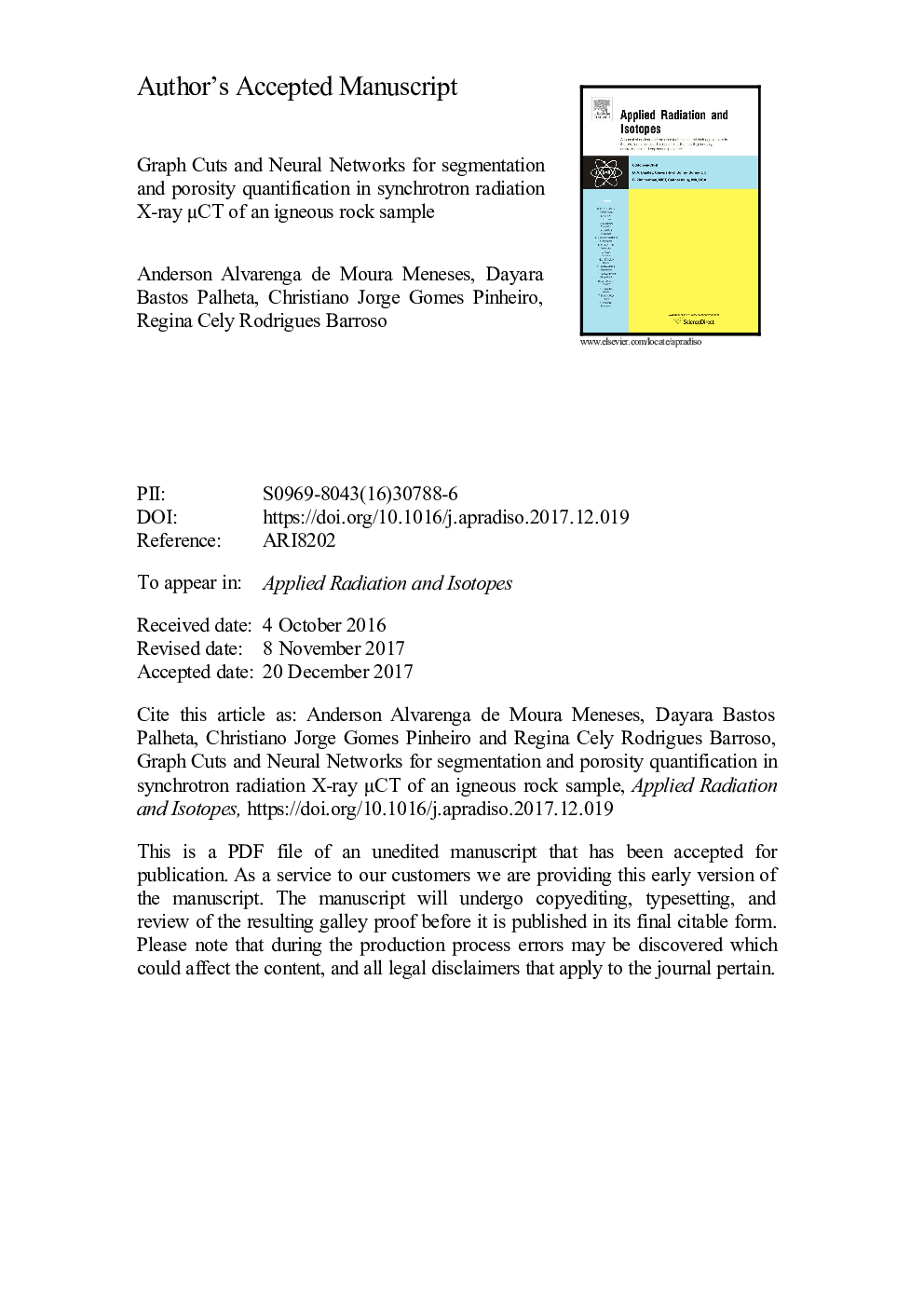| Article ID | Journal | Published Year | Pages | File Type |
|---|---|---|---|---|
| 8208715 | Applied Radiation and Isotopes | 2018 | 41 Pages |
Abstract
X-ray Synchrotron Radiation Micro-Computed Tomography (SR-µCT) allows a better visualization in three dimensions with a higher spatial resolution, contributing for the discovery of aspects that could not be observable through conventional radiography. The automatic segmentation of SR-µCT scans is highly valuable due to its innumerous applications in geological sciences, especially for morphology, typology, and characterization of rocks. For a great number of µCT scan slices, a manual process of segmentation would be impractical, either for the time expended and for the accuracy of results. Aiming the automatic segmentation of SR-µCT geological sample images, we applied and compared Energy Minimization via Graph Cuts (GC) algorithms and Artificial Neural Networks (ANNs), as well as the well-known K-means and Fuzzy C-Means algorithms. The Dice Similarity Coefficient (DSC), Sensitivity and Precision were the metrics used for comparison. Kruskal-Wallis and Dunn's tests were applied and the best methods were the GC algorithms and ANNs (with Levenberg-Marquardt and Bayesian Regularization). For those algorithms, an approximate Dice Similarity Coefficient of 95% was achieved. Our results confirm the possibility of usage of those algorithms for segmentation and posterior quantification of porosity of an igneous rock sample SR-µCT scan.
Related Topics
Physical Sciences and Engineering
Physics and Astronomy
Radiation
Authors
Anderson Alvarenga de Moura Meneses, Dayara Bastos Palheta, Christiano Jorge Gomes Pinheiro, Regina Cely Rodrigues Barroso,
